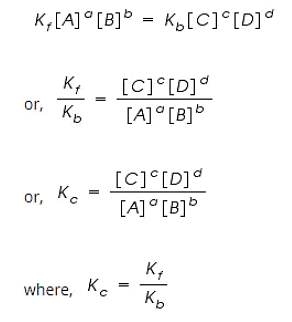What will be the major product of the following sequence of reactions?
\(n−Bu−≡ \xrightarrow[{(ii)Lindlar catalyst, H_2}]{(i)n-BuLi,n-C_5H_{11}Cl}\)
\(n−Bu−≡ \xrightarrow[{(ii)Lindlar catalyst, H_2}]{(i)n-BuLi,n-C_5H_{11}Cl}\)
The Correct Option is C
Solution and Explanation

Hence, the correct option is (C)
Top Questions on Chemical Reactions
- What is the major product when 1-bromopropane undergoes nucleophilic substitution with \(OH^-\)?
- BITSAT - 2025
- Chemistry
- Chemical Reactions
- In which of the following reactions is a combination reaction taking place?
I. CuO + H$_2$ $\xrightarrow{\Delta}$ Cu + H$_2$O
II. ZnO + C → Zn + CO
III. 4Na + O$_2$ → 2Na$_2$O
IV. CH$_4$ + 2O$_2$ → CO$_2$ + 2H$_2$O- CBSE Compartment X - 2025
- Science
- Chemical Reactions
- For a reaction, $$ {N}_2{O}_5(g) \rightarrow 2{NO}_2(g) + \frac{1}{2} {O}_2(g) $$ in a constant volume container, no products were present initially. The final pressure of the system when 50% of the reaction gets completed is:
- JEE Main - 2025
- Chemistry
- Chemical Reactions
- Assertion (A): Concentrated nitric acid is diluted by adding water slowly to acid with constant stirring.
Reason (R): Concentrated nitric acid is easily soluble in water.
In the light of the above statements, choose the most appropriate answer from the options given below:- CBSE Class X - 2025
- Science
- Chemical Reactions
- What is meant by decomposition reaction? Write the chemical reaction of decomposition of sugar on heating.
- Maharashtra Class X Board - 2025
- Science and Technology
- Chemical Reactions
Questions Asked in JEE Main exam
Nature of compounds TeO₂ and TeH₂ is___________ and ______________respectively.
- JEE Main - 2025
- Inorganic chemistry
- Let \( A = [a_{ij}] \) be a matrix of order 3 \(\times\) 3, with \(a_{ij} = (\sqrt{2})^{i+j}\). If the sum of all the elements in the third row of \( A^2 \) is \( \alpha + \beta\sqrt{2} \), where \(\alpha, \beta \in \mathbb{Z}\), then \(\alpha + \beta\) is equal to:
- JEE Main - 2025
- Matrices and Determinants
Consider the following sequence of reactions :

Molar mass of the product formed (A) is ______ g mol\(^{-1}\).- JEE Main - 2025
- Organic Chemistry
The magnitude of heat exchanged by a system for the given cyclic process ABC (as shown in the figure) is (in SI units):

- JEE Main - 2025
- Electric charges and fields
- The value of \( (\sin 70^\circ)(\cot 10^\circ \cot 70^\circ - 1) \) is:
- JEE Main - 2025
- Trigonometric Identities
Concepts Used:
Law of Chemical Equilibrium
Law of Chemical Equilibrium states that at a constant temperature, the rate of a chemical reaction is directly proportional to the product of the molar concentrations of the reactants each raised to a power equal to the corresponding stoichiometric coefficients as represented by the balanced chemical equation.
Let us consider a general reversible reaction;
A+B ↔ C+D
After some time, there is a reduction in reactants A and B and an accumulation of the products C and D. As a result, the rate of the forward reaction decreases and that of backward reaction increases.
Eventually, the two reactions occur at the same rate and a state of equilibrium is attained.
By applying the Law of Mass Action;
The rate of forward reaction;
Rf = Kf [A]a [B]b
The rate of backward reaction;
Rb = Kb [C]c [D]d
Where,
[A], [B], [C] and [D] are the concentrations of A, B, C and D at equilibrium respectively.
a, b, c, and d are the stoichiometric coefficients of A, B, C and D respectively.
Kf and Kb are the rate constants of forward and backward reactions.
However, at equilibrium,
Rate of forward reaction = Rate of backward reaction.

Kc is called the equilibrium constant expressed in terms of molar concentrations.
The above equation is known as the equation of Law of Chemical Equilibrium.



